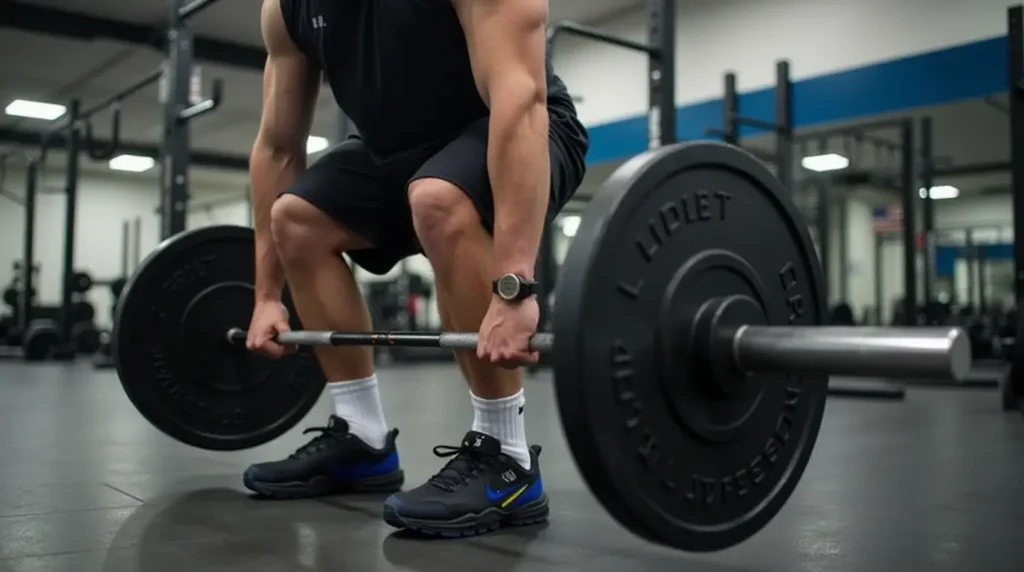When you think about a well-rounded fitness routine, pull day workouts are often an essential, yet overlooked component. You might be familiar with push exercises for the chest or legs, but have you ever wondered about the importance of pull day workouts? Pull day focuses on exercises that build your back, biceps, rear delts, and forearms. Whether you’re looking to increase your upper-body strength, improve posture, or simply enhance your physique, pull day exercises are crucial for achieving your fitness goals.
This article will guide you through everything you need to know about what to work on during pull day, including the best exercises, common mistakes, and the most effective routines. Whether you’re a beginner or an advanced athlete, you’ll find valuable insights to help you optimize your pull day workouts and achieve better results. Let’s get started.
Table of Contents
What Is a Pull Day Workout?
Definition and Purpose of Pull Day
Pull day refers to a workout session that focuses on exercises involving pulling movements. These exercises primarily target the back, biceps, and forearms. The main goal of a pull day is to build strength and muscle in the posterior chain—the muscles along the back of the body.
By including pull day in your workout routine, you’re creating balance. Most workout programs emphasize pushing movements (like bench presses and squats), but if you neglect the pulling muscles, you risk developing muscular imbalances. Pull day workouts correct this by focusing on muscle groups that are often undertrained, like your lats, traps, and biceps.
Incorporating these pulling exercises will not only help with muscle development but will also enhance your overall athletic performance and functional strength.
Why You Should Include Pull Day in Your Routine
You might be wondering why it’s important to dedicate a whole workout to pulling exercises. Well, pull day is essential for several reasons:
- Improved Posture: Strengthening your back muscles helps with posture by preventing slumping. Your back muscles play a key role in maintaining an upright stance, so by working them regularly, you can avoid posture problems down the road.
- Increased Grip Strength: Pulling exercises are excellent for building grip strength, which is essential for many functional movements and other lifts. Stronger hands and forearms will improve your performance in other lifts like deadlifts, rows, and even pull-ups.
- Enhanced Back Development: Pull day workouts help you develop a wide, thick back, which not only looks impressive but is crucial for overall strength and balance in the body. Your back muscles support every movement you make, and a strong back can prevent injury.
Key Muscles Worked on Pull Day
Back Muscles
The primary muscles worked on pull day are in the back, which includes your lats, traps, and rhomboids. These muscles are essential for most pulling movements.
Latissimus Dorsi (Lats)
The lats are the large muscles on the sides of your back, responsible for creating width and a V-shape. Targeting the lats with exercises like pull-ups and lat pulldowns helps to develop that coveted wide back look.
Trapezius (Traps)
The traps are located at the top of your back, extending from the neck to the middle of your back. They play a key role in shoulder stability and are activated during pulling exercises like shrugs, rows, and face pulls.
Rhomboids
Located between your shoulder blades, the rhomboids help pull your shoulders back and stabilize your upper back. Exercises like reverse flys and seated rows are great for engaging the rhomboids.
Biceps
Although biceps are a smaller muscle group compared to your back, they play a significant role in pulling movements. Your biceps help you pull objects toward your body, so any pulling exercise will involve the biceps to some extent.
Incorporating exercises like barbell curls, hammer curls, and dumbbell curls will increase the size and strength of your biceps, contributing to more powerful pulling movements.
Forearms and Grip Strength
Pull day exercises also engage the forearms and build grip strength. Strong forearms are essential for holding heavy weights and improving performance in exercises like deadlifts, rows, and pull-ups. Focus on exercises such as farmer’s walks, wrist curls, and reverse curls to develop your forearms.
Rear Delts and Traps
The rear delts (posterior deltoids) and traps are often overlooked in many training programs. However, these muscles are crucial for overall shoulder stability and improving posture. Exercises like reverse flys, face pulls, and shrugs will engage the rear delts and traps, enhancing shoulder health and strength.
Best Pull Day Exercises
Now that you understand which muscles are targeted on pull day, it’s time to look at the best exercises to include in your pull day workout routine. The following exercises are proven to build strength and muscle in the back, biceps, and forearms.
Pull-ups and Chin-ups
Pull-ups and chin-ups are two of the most effective bodyweight exercises for back and bicep development. These exercises target the lats, traps, and biceps, and they also engage the forearms and core.
- Pull-ups: Done with an overhand grip (palms facing away), pull-ups focus more on the back muscles.
- Chin-ups: Performed with an underhand grip (palms facing you), chin-ups place more emphasis on the biceps.
You can modify these exercises if you’re a beginner by using resistance bands or assisted pull-up machines.
Barbell Rows
Barbell rows are an essential compound exercise for building thickness in your back. This exercise targets the lats, traps, and rhomboids while also engaging the rear delts and biceps. To perform this exercise correctly, keep your torso at a slight angle and maintain a neutral spine.
Deadlifts (Variations)
Deadlifts are a full-body exercise, but they primarily target the back, glutes, and hamstrings. Including deadlifts in your pull day routine is essential for building overall strength and muscle mass.
There are several variations of deadlifts, including:
- Conventional Deadlifts: The standard form, which engages the back and lower body.
- Romanian Deadlifts: Focuses on the hamstrings and glutes while still targeting the lower back.
- Sumo Deadlifts: A wider stance that places more emphasis on the inner thighs and hips.

Lat Pulldowns
Lat pulldowns are an excellent alternative to pull-ups and are great for targeting the lats, especially if you’re unable to do pull-ups. The exercise can be done with a wide or narrow grip, depending on which part of the lats you wish to focus on.
T-Bar Rows
T-bar rows are another great exercise for building back thickness. By using a chest-supported T-bar machine, you reduce the risk of injury and isolate the back muscles effectively.
Face Pulls
Face pulls are an excellent exercise for targeting the rear delts and traps, which are often neglected in traditional lifting routines. Use a rope attachment on a cable machine and pull the rope towards your face, keeping your elbows high.
Sample Pull Day Workout Routine
Now that you have a solid understanding of the key exercises for pull day, let’s create a sample pull day workout routine. This will vary depending on your experience level.
Beginner Pull Day Routine
If you’re new to strength training, start with basic movements to build foundational strength.
- Pull-ups (Assisted if necessary): 3 sets of 6-8 reps
- Barbell Rows: 3 sets of 8-10 reps
- Lat Pulldowns: 3 sets of 10-12 reps
- Dumbbell Curls: 3 sets of 12 reps
Intermediate Pull Day Routine
For those with more experience, increase the intensity and volume to challenge your muscles.
- Pull-ups: 4 sets of 6-8 reps
- T-Bar Rows: 3 sets of 8-10 reps
- Face Pulls: 3 sets of 12-15 reps
- Hammer Curls: 4 sets of 10-12 reps
Advanced Pull Day Routine
Advanced athletes should focus on progressive overload and incorporate heavy compound lifts into their routines.
- Weighted Pull-ups: 5 sets of 4-6 reps
- Barbell Rows (Heavy): 4 sets of 6-8 reps
- Deadlifts: 4 sets of 5 reps
- EZ Bar Curls: 4 sets of 8-10 reps
Common Mistakes to Avoid on Pull Day
Incorrect Form
Maintaining proper form is essential for avoiding injury and maximizing results. When performing exercises like rows and deadlifts, ensure that your back is straight, your shoulders are engaged, and you’re pulling from your elbows, not your hands.
Overtraining or Undertraining
Overtraining can lead to burnout, while undertraining will prevent muscle growth. Be mindful of your volume and intensity, and make sure to allow enough recovery time between pull day workouts.
Pull Day Recovery and Nutrition
Importance of Recovery
Your muscles grow when you rest, not while you’re working out. Aim to take at least 48 hours of rest between pull days to allow your back and biceps to recover. You can alternate with other workout days like push or leg days.
Post-Workout Nutrition
Proper nutrition is vital for muscle recovery. After a pull day workout, focus on consuming a meal rich in protein and carbohydrates to help repair muscle tissue and replenish energy stores.
Example Post-Workout Meal:
- Grilled Chicken: 150g for lean protein
- Sweet Potatoes: 200g for carbohydrates
- Olive Oil: 1 tbsp for healthy fats

FAQ: Frequently Asked Questions About Pull Day Workouts
What is the best exercise to do on a pull day?
The best exercises for pull day include pull-ups, deadlifts, and barbell rows. These exercises engage multiple muscle groups and help you build strength and size in your back and arms.
How often should I do pull day workouts?
You should aim to perform pull day workouts 1-2 times per week, depending on your training frequency. Make sure to allow sufficient recovery time between sessions to maximize muscle growth.
Can I do push exercises on the same day as pull exercises?
While it’s possible to combine push and pull exercises, many people prefer to split them into separate days for optimal recovery and performance. This allows you to focus more effectively on each muscle group.
Conclusion
Pull day workouts are an essential component of any balanced fitness routine. By targeting the muscles in your back, biceps, and forearms, you’ll build strength, improve posture, and enhance your overall physique. Stick with the exercises, pay attention to form, and prioritize recovery, and you’ll start to see noticeable improvements in no time. Get started with your pull day workout routine today and unlock your full potential!
Ready to take control of your weight? Discover how the Concentra Weight Management Program can help you reach your goals! : Concentra Weight Management Program –
Curious about how structured weight management programs can benefit you? Learn the science behind effective weight loss strategies!: How Do Weight Management Programs Work? –
Want to sculpt a stronger chest? Try this cable chest workout for maximum gains!: Cable Chest Workout – Build Chest with Cables –
Looking for a fitness challenge? Learn everything you need to know about the intense Murph Workout!: What is the Murph Workout? –

